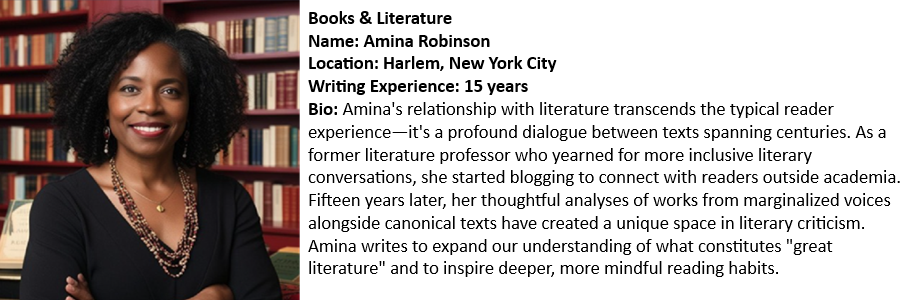The Historical Context of Literary Censorship
Literary censorship has a long-standing history that can be traced back to ancient civilizations, where the control of written expression often reflected the values, beliefs, and political climates of the time. One of the earliest examples of censorship originates from Ancient Rome. During this period, the ruling authorities would ban works that were considered subversive or threatening to the social order. Authors faced severe repercussions if their writings were deemed inappropriate or harmful to the Empire, leading to the suppression of dissenting voices.
The Middle Ages further illustrated the complexities of literary censorship, particularly through the actions of the Catholic Church. The Church wielded considerable power, taking it upon itself to safeguard doctrine against any literature that diverged from accepted beliefs. Texts that contradicted religious teachings were often labeled heretical. The infamous Index Librorum Prohibitorum, launched in the 16th century, served as a formal catalog of prohibited books that were thought to endanger faith, stifling intellectual discourse and limiting access to knowledge.
As societies evolved, so did the nature of censorship. The Enlightenment period saw the emergence of new ideas challenging traditional norms, which prompted governments to impose stricter regulations on publications. Authoritarian regimes utilized censorship as a tool to regulate thought and suppress opposition. Various methods, such as book burning, official bans, and restrictions on distribution, were employed to prevent dissenting literature from reaching the populace.
In modern times, pressures for censorship continue, although they often manifest through different mechanisms, such as self-censorship or digital suppression. Contemporary society is still wrestling with the balance between protecting free expression and shielding individuals from potentially harmful content. Thus, the historical context of literary censorship reveals a persistent struggle between authority and the pursuit of knowledge, demonstrating that the banning of books is an issue that transcends time and culture.
Reasons Behind Book Bans: Social and Political Influences
Throughout history, the act of banning books has often been influenced by a complex interplay of social, cultural, and political factors. The roots of censorship can often be traced back to fears of dissent and the desire for societal conformity. In many cases, governments or powerful organizations have deemed certain literary works objectionable due to the potential threat these materials pose to established norms or authority. This fear can manifest itself in various forms, including the suppression of ideas deemed dangerous or subversive.
Moral concerns have played a significant role in the decision to ban specific content. Literature that challenges prevailing moral standards or that explores taboo subjects often faces heightened scrutiny. For example, the process of industrialization and the rapid changes it brought about in society led to the emergence of concerns over morality and taste, causing some literary works to be targeted for censorship. This underscores how literature can reflect societal values while simultaneously challenging them.
Historical events, such as wars and revolutions, have also been pivotal in the censorship landscape. During times of conflict, literature often becomes a battleground for ideological warfare, with texts that oppose the dominant narrative being banned. The fear of dissenting voices can lead to increased restrictions on what can be published and consumed. As societies evolve, changing cultural attitudes can result in books that were once accepted becoming contentious, reflecting the fluid nature of censorship.
Case studies reveal how specific works, such as George Orwell’s “1984” or Harper Lee’s “To Kill a Mockingbird,” have been targeted due to the political climates or societal issues of their time. These examples illustrate the ongoing impact of censorship on literature, emphasizing the importance of understanding the reasons behind book bans in order to appreciate their broader implications on free expression and artistic integrity.
The Impact of Censorship on Literature and Culture
Censorship has long been a contentious issue, and its implications extend far beyond the mere act of restricting access to certain texts. Ironically, efforts to suppress literature often result in increased visibility and enhanced significance for the very works intended to be stifled. Prohibited books such as George Orwell’s 1984, J.D. Salinger’s The Catcher in the Rye, and Harper Lee’s To Kill a Mockingbird exemplify this phenomenon. While these texts faced censorship due to their challenging themes and controversial ideas, they gained notoriety and readership precisely because of the debates surrounding their availability.
The backlash against banned books frequently serves to galvanize public interest. When a book is labeled as controversial or unwelcome, it often sparks curiosity among readers who are eager to explore the ethos of the narratives or the motivations behind the censorship. This pattern highlights the paradoxical nature of censorship: rather than silencing discourse, it can inadvertently amplify the voices of marginalized authors and their essential messages. Readers often seek out these works to gain insight into perspectives that challenge social norms and provoke critical discussions about society.
Beyond individual texts, the broader cultural implications of literary censorship cannot be understated. The banning of literature raises questions about intellectual freedom and the limits of artistic expression. Censorship acts as a mirror reflecting societal anxieties, revealing underlying tensions related to power dynamics, identity, and morality. Artistic endeavors naturally thrive in environments of open dialogue and diverse perspectives; thus, the act of censoring literature can have a stultifying effect on culture as a whole. In this way, the discourse surrounding censorship fosters a more vibrant literary landscape, ultimately emphasizing the necessity of open access to diverse voices in literature and culture.
The Ongoing Fight for Intellectual Freedom in Literature
The struggle for intellectual freedom in literature remains a pertinent issue in contemporary society. Recent years have witnessed a noticeable uptick in challenges to various literary works, particularly within educational settings. These challenges often stem from differing values and beliefs about content, with some advocating for the restriction of reading materials that they perceive as inappropriate or objectionable. Advocacy organizations such as the American Library Association (ALA) and PEN America are at the forefront of defending the right to read and publish, actively working to combat censorship in literature.
Modern technology has significantly influenced the landscape of censorship. The internet, while serving as a platform for unfettered access to a wide array of literary works, has also provided avenues for organized campaigns against specific titles. Social media can quickly amplify calls for censorship, leading to swift reactions from publishers, educators, and librarians. This development underscores the importance of continual vigilance in defending intellectual freedom. The ability to read freely is not only a personal right but also a cornerstone of democracy, fostering an environment where diverse viewpoints can be expressed and debated.
Moreover, educational institutions often find themselves at the center of literary challenges, where the balance between protecting students and ensuring access to diverse literature is increasingly delicate. The ongoing debate surrounding curricular content not only impacts students’ reading options but also raises critical questions about the role of education in shaping informed, critical thinkers capable of engaging in a democratic society. This reality highlights the necessity for educators, parents, and advocates to collaborate in promoting intellectual freedom, ensuring that the voices of authors—past and present—remain accessible to all. Ultimately, the continued fight against censorship is vital for safeguarding freedom of expression and nurturing a rich literary culture.


